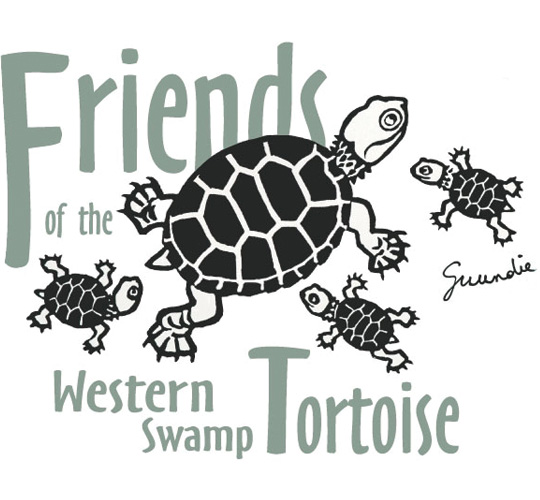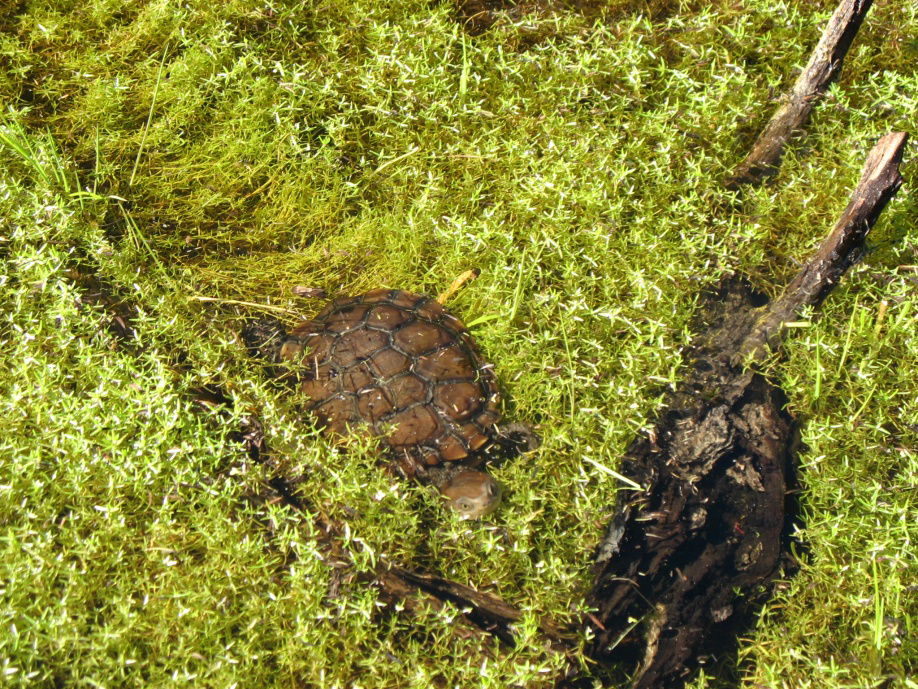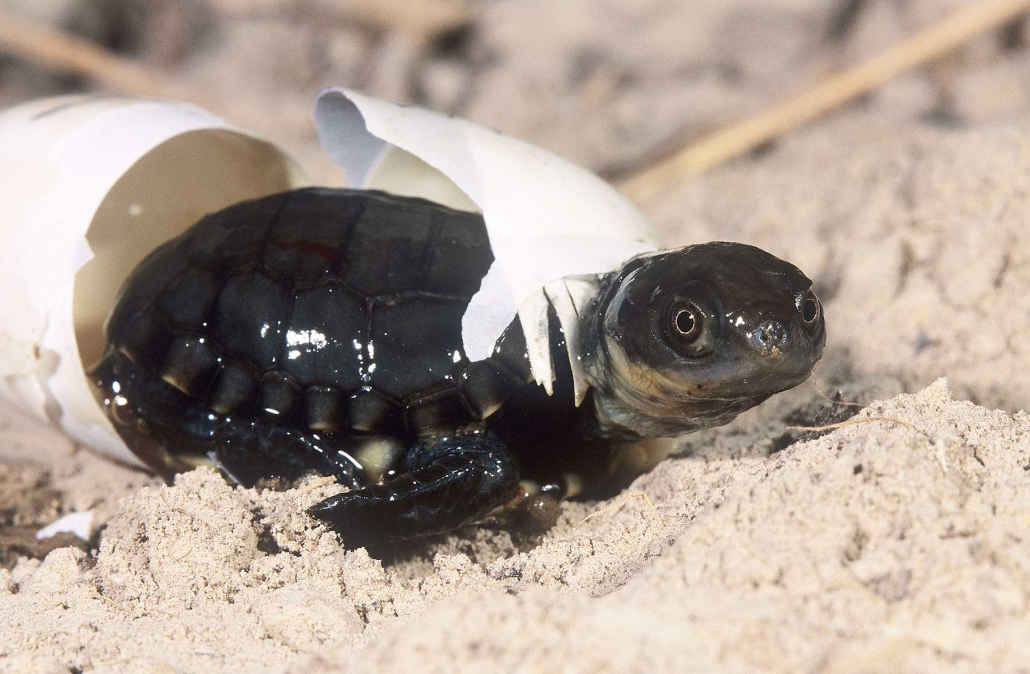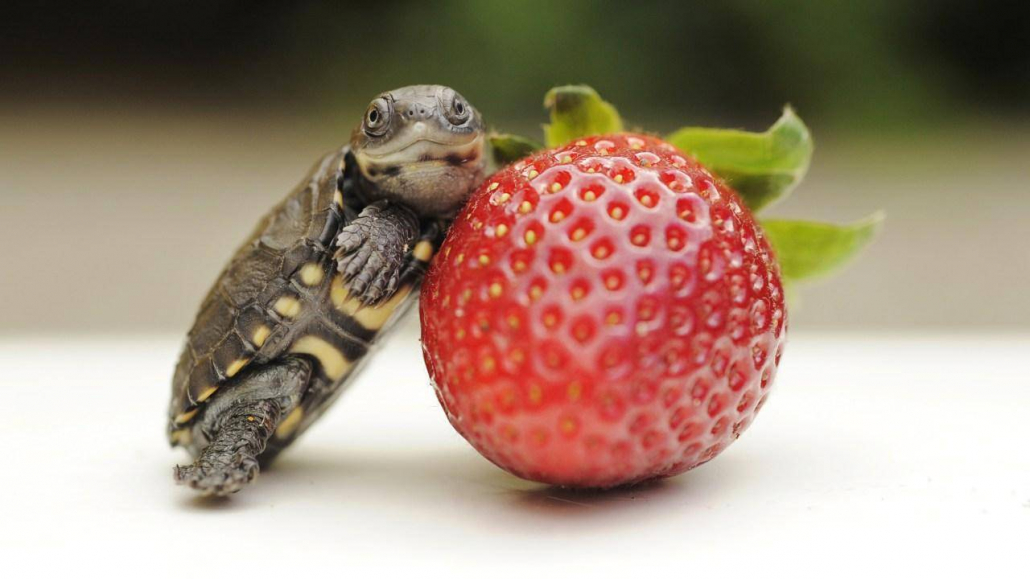The Western Swamp Tortoise (or Turtle) Pseudemydura umbrina has a short neck and a shell length of about 15 cm, so it is easily distinguishable from the other (more common) freshwater turtle in southern WA, the Oblong Turtle. Chelodina colliei (formerly oblonga) has a neck equal in length to its shell and can grow to 30 cm.
LIFE CYCLE
June July (Winter)
The tortoises enter swamps once there is a couple of centimetres of water in them. They only live in non-perennial (temporary) shallow swamps with a clay base, where much of the surrounding land is predominantly sand. They sense the time has come to leave their aestivation* places and begin to feed on small crustaceans and insect larva to build up their body mass.
September (Spring)
As we move through spring, towards summer the Western Swamp Tortoises are also on the move, out of the drying swamps and back into their natural or artificial aestivation* places.
*Aestivation (a type of hibernation) protects the tortoises from the hot Western Australian summer and any bushfires that may occur. It can be in natural cracks in the clayey ground, under deep leaf litter or in artificial PVC tunnels installed in the reserves.
November and early December (Summer)
Adult breeding females (at least 8 years old) lay 3 or 4 eggs underground in their aestivation places near the edges of the swamp, and take no further care of them.
May (Autumn)
Eggs hatch from late autumn to early winter, when the rains begin, and the hatchlings are about as big as an Australian ten-cent coin, ie 2.5 cm or 1 inch diameter.





